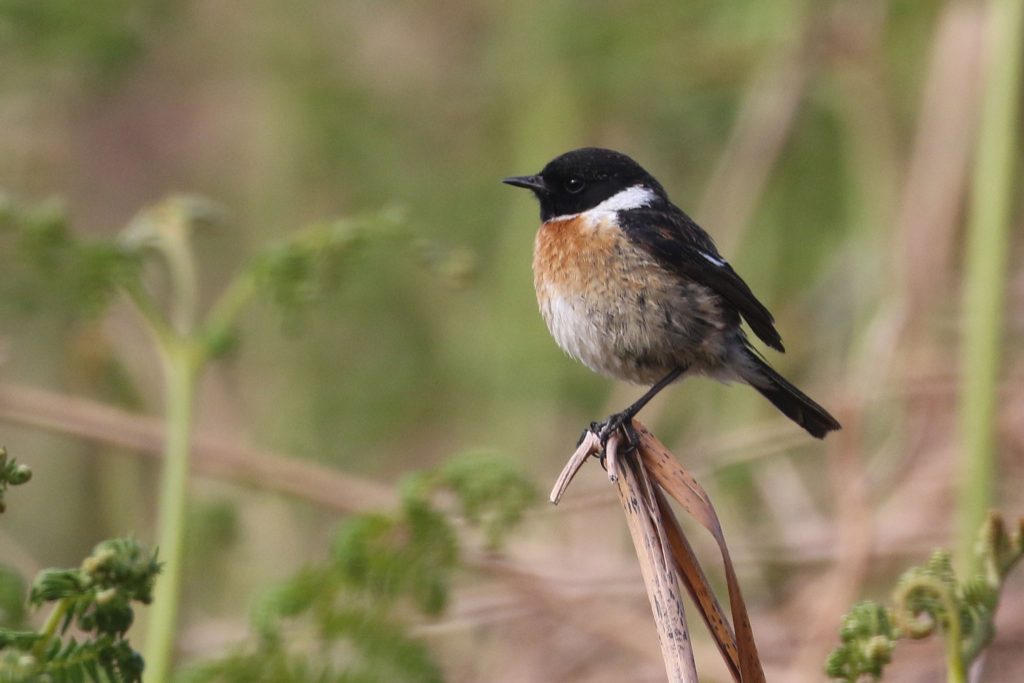The Stonechat (Saxicola torquatus) is a small passerine bird species that belongs to the family Muscicapidae. It is native to the United Kingdom and can be found across the country, including England, Scotland, Wales, and Northern Ireland. The stonechat is a migratory bird, with some individuals migrating to southern Europe or North Africa during the winter months.
Some key characteristics for stonechat include:
- Appearance: The male stonechat has a distinct appearance with a black head, orange-red breast, and a white collar. Its back is dark brown, and the tail is black. Females have similar markings but are less vibrant, with a brown head and a paler breast.
- Habitat: Stonechats prefer open habitats such as heathlands, moorlands, coastal areas, and scrublands. They can also be found in parks, gardens, and farmlands.
- Behavior: Stonechats are known for their distinctive call, which sounds like two stones being tapped together. They are territorial birds and often perch on exposed branches or fence posts, from where they can spot insects and small invertebrates to feed on. They are agile and can hover briefly while hunting.
- Breeding: Stonechats typically breed between March and July. The male performs a courtship display by singing and flying around its territory. The female constructs a cup-shaped nest made of grass, moss, and other vegetation in a dense bush or low vegetation. The female usually lays four to six eggs, which are incubated for about two weeks.
- Conservation status: The UK stonechat is not considered globally threatened, but its populations have experienced some declines in the past due to habitat loss and changes in land management practices. However, it remains a relatively common and widespread species in the United Kingdom.

